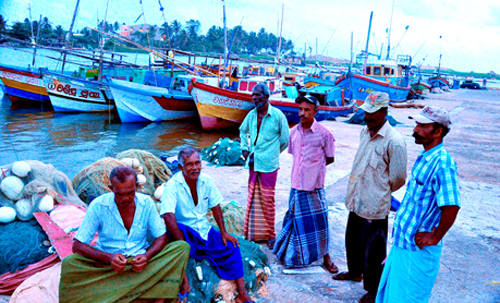News
Massive cyclone hits eastern India, Lanka’s coastal areas on high alert
Sri Lanka’s coastal areas were put on high alert because of a possible fallout from a massive cyclone that was lashing South Eastern India yesterday. The Department of Meteorology sent out an early warning of dangerous and rough seas to the authorities while sea goers were advised to take precautions.
Disaster Mangement Centre (DMC) official Pradeep Kodippili said the police and security forces had also been placed on alert yesterday while the Fisheries Ministry had been told to warn fishermen.

Fishermen on a beach in Moratuwa while away the time after they were prevented from going out to sea yesterday owing to rough and dangerous conditions triggered-off by a massive cyclone that hit the eastern coast of India yesterday evening. Pic by Mangala Weerasekera
According to Mr. Kodippili the wind speed in most of the coastal areas was set to hit something like 80 kmph triggering rough sea conditions as the cyclone “We have alerted all fishery harbours and stations throughout the country to prevent boats from going out to sea while vessels that had gone out the previous night were told to return immediately,” Fisheries Monitoring and Controlling Surveillance Centre official Aruna Fernando said.
Cyclone Phailin packing a speed of 240 kmph and described as half the size of India hit the Indian eastern coast states of Orissa and Andra Pradesh, according to foreign media reports.
According to a latest AFP report from Bhuwaneswar, India evacuated half a million people as the massive Cyclone Phailin closed in on the impoverished east coast yesterday, with winds already uprooting trees and tearing down flimsy homes.
The storm packed gusts of up to 240 kilometres per hour (150 miles per hour) as it churned over the Bay of Bengal, making it potentially the most powerful cyclone to hit the area since 1999, when more than 8,000 died, the Indian weather office said.

